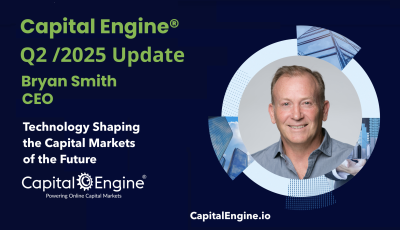McKinsey’s Private Markets Annual Review

PRIVATE MARKETS 2021: A YEAR OF DISRUPTION
Aug 03, 2021
The year 2020 was turbulent for private markets, as it was for much of the world. We typically assess meaningful change in the industry over years or decades, but the COVID-19 pandemic and other events spurred reassessment on a quarterly or even monthly basis. Following a second-quarter “COVID correction” comparable to that seen in public markets, private markets have since experienced their own version of a K-shaped recovery: a vigorous rebound in private equity contrasting with malaise in real estate; a tailwind for private credit but a headwind for natural resources and infrastructure. The year also saw a deeper focus for private markets firms on their people, the set of factors they consider when investing, and the ways they work.
Private equity (PE) continues to perform well, outpacing other private markets asset classes and most measures of comparable public market performance. The strength and speed of the rebound suggest resilience and continued momentum as investors increasingly look to private markets for higher potential returns in a sustained low-yield environment (Exhibit 1). The most in-depth research continues to affirm that, by nearly any measure, private equity outperforms public market equivalents (with net global returns of over 14 percent). We highlight several trends in particular:



Download Report..
About Capital Engine®
Capital Engine® facilitates the creation of efficient and trusted online private capital and alternative investment marketplaces, through our tiered business ecosystem: private label platforms, strategic partnerships and inhouse marketplace for private placements.
Capital Engine® provides a comprehensive, integrated suite of digital investment tools, back office technology and distribution platform to connect private capital with HNW individuals and family office capital.
Our software helps leverage the opportunity to better originate and showcase a diverse selection of private investment deals and offer these to investors i.e. a deal’s potential viability can be better assessed, market appetite determined and transaction promptly closed.
Private equity (PE) continues to perform well, outpacing other private markets asset classes and most measures of comparable public market performance. The strength and speed of the rebound suggest resilience and continued momentum as investors increasingly look to private markets for higher potential returns in a sustained low-yield environment (Exhibit 1). The most in-depth research continues to affirm that, by nearly any measure, private equity outperforms public market equivalents (with net global returns of over 14 percent). We highlight several trends in particular:

- PE investors appear to have a stronger risk appetite than they did a decade ago. During the global financial crisis (GFC) in 2008, many limited partners (LPs) pulled back from private asset classes and ended up missing out on much of the recovery. This time, most LPs seem to have learned from history, as investor appetite for PE appears relatively undiminished following the turbulence of the last year.
- All things considered, it was a relatively strong year for PE fundraising. Overall funds raised declined year on year due to an apparent short-term discontinuity in the early months of the pandemic, but the prepandemic pace of fundraising returned by the fourth quarter (Exhibit 2). Growth in assets under management (AUM) and investment performance in most asset classes eased off in the spring, as the industry adjusted to new working norms, then came back strong in the latter half of the year. Venture capital (VC) bucked the broader trend with strong growth, driven by outsize interest in tech and healthcare.

- In PE, fundraising growth of successor funds strongly correlates with performance of the preceding fund at the time of fundraising launch. This is an intuitive pattern, now backed up by data. But another bit of conventional wisdom among LPs—that growth in fund size risks degrading performance—turns out not to hold up under analysis. Growth in fund size seems to have little correlation with performance.
- Private equity purchase multiples (alongside price-to-earnings multiples in the public markets) have kept climbing and are now higher than pre-GFC levels. In parallel, dry powder reached another new high, while debt grew cheaper and leverage increased—factors providing upward support for PE deal activity. Few transactions were completed in the depths of the (brief) slide in the public markets, reminding many in the industry that “waiting for a buying opportunity” may entail a lot more waiting than buying.
- Fundraising for private equity secondaries flourished in 2020, tripling on the back of strong outperformance in recent years (Exhibit 3). The space remains fairly concentrated among a handful of large firms, with the largest fund sizes now rivaling buyout megafunds. Continued evolution in secondaries may be key to making private markets more accessible to a broader range of investors.

- The phrase “permanent capital”—like “private equity” itself—means different things to different people. To some, it refers to general partners’ (GPs) sale of a stake in the firm, either directly to an investor, or via a fund-of-funds stake, or via IPO. Others interpret the term to allude to LP fund commitments of longer-than-normal or even indefinite duration. Many now also use the term to connote GPs’ acquisition of insurance companies with balance sheets that may be investible at least partly in the GPs’ offerings. In all of these forms, permanent capital has accelerated as private markets firms continue to diversify their sources of capital away from traditional third-party blind-pool fundraising.
- Another form of permanent capital, special-purpose acquisition companies (SPACs), boomed in 2020. Enthusiasm for the tech, healthcare, and clean-energy sectors propelled a huge surge of SPAC deals. Private markets firms dove in, both as deal sponsors and as sellers. SPAC activity has continued into 2021, as many investors remain optimistic that this third wave of SPACs will prove more durable than those in prior market cycles.
Download Report..
About Capital Engine®
Capital Engine® facilitates the creation of efficient and trusted online private capital and alternative investment marketplaces, through our tiered business ecosystem: private label platforms, strategic partnerships and inhouse marketplace for private placements.
Capital Engine® provides a comprehensive, integrated suite of digital investment tools, back office technology and distribution platform to connect private capital with HNW individuals and family office capital.
Our software helps leverage the opportunity to better originate and showcase a diverse selection of private investment deals and offer these to investors i.e. a deal’s potential viability can be better assessed, market appetite determined and transaction promptly closed.
Latest Articles





